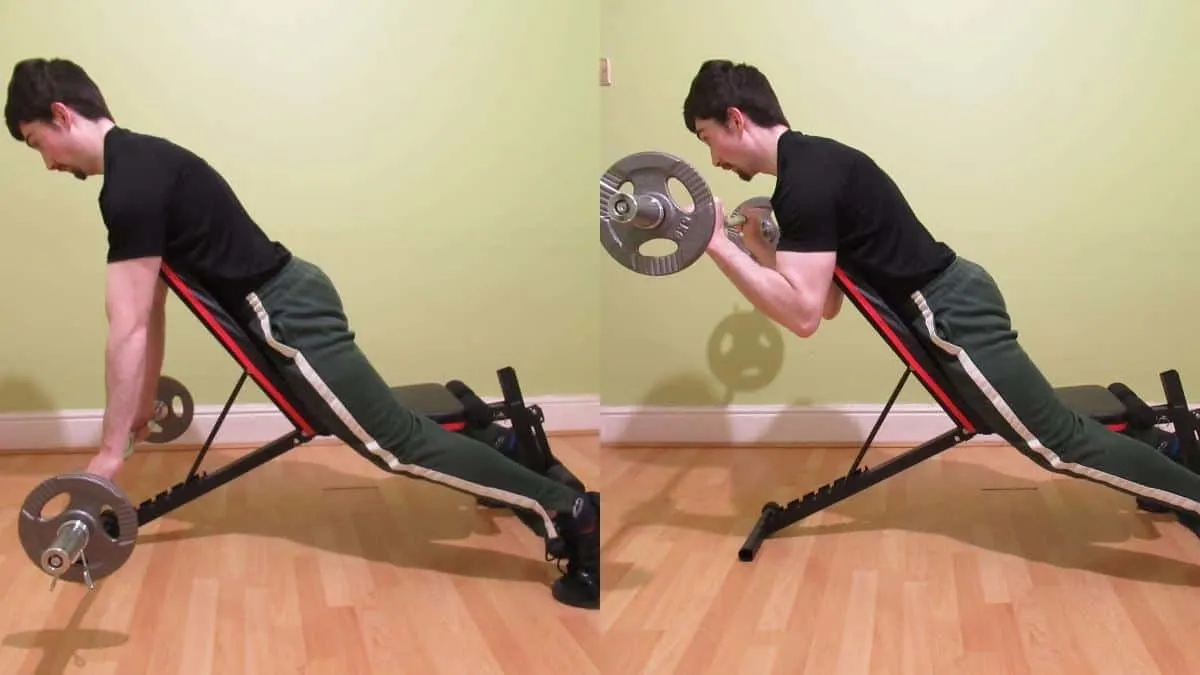Reverse spider curls are a great overall arm exercise for building muscle mass. Not only do they train the bicep brachii, but they also work the brachialis and brachioradialis like a reverse barbell curl does.
This tutorial shows you how to perform a dumbbell spider curl with a reverse grip. So if you already have decent biceps but comparatively weaker brachialis and brachioradialis development, then this exercise guide is definitely for you.
Reverse spider curl exercise details
- Also Known As: Overhand spider curl, pronated spider curl
- Main Muscles: Biceps brachii, brachioradialis, brachialis
- Secondary Muscles: Forearm extensors
- Exercise Type: Strength
- Exercise Mechanics: Isolation
- Difficulty Level: Beginner
- Equipment Needed: Barbell, weights, adjustable bench.
How to do reverse spider curls for your arms

- Set the angle of an adjustable bench to 60 degrees.
- Load an appropriate amount of weight onto a bar.
- Place the barbell at the backrest end of the bench.
- Sit on the bench with your torso pressed against the backrest.
- Reach down and grab the bar with an overhand grip.
- Curl the weight toward your shoulders until the tops of your forearms make forceful contact with your biceps.
- Hold the contraction for a moment and then lower the weight under control until your elbows reach full extension.
- Perform 3-5 sets of 10-15 reps in total.
Reverse spider curl benefits
The reverse barbell spider curl has some distinct benefits over the regular EZ bar spider curl. While the latter is a bicep-driven movement, the former focuses on crucial arm muscles that most lifters overlook.
Better brachialis isolation
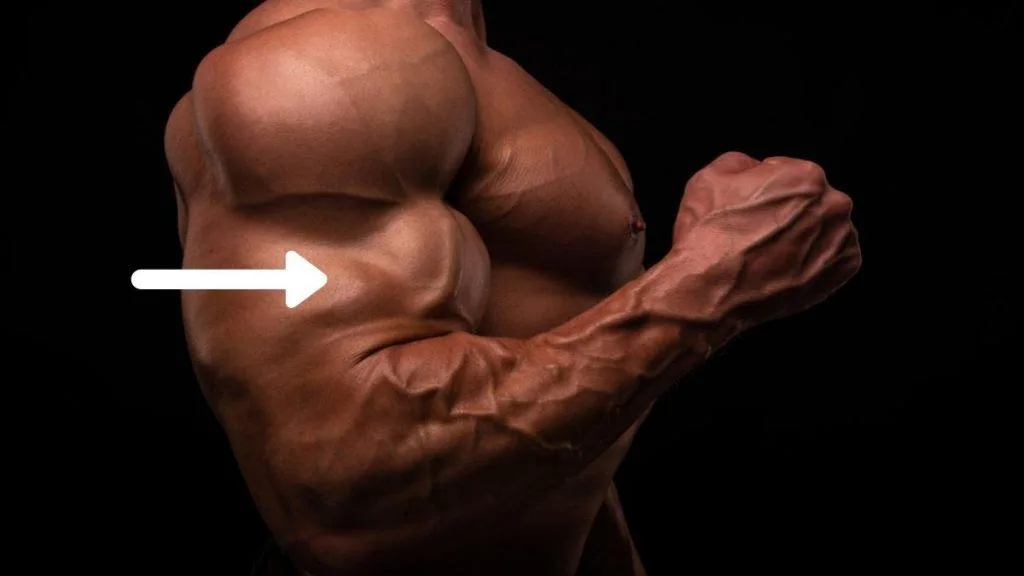
The brachialis, like the biceps, is an elbows flexor. Unlike the biceps, however, the brachialis is not capable of supinating the forearm. [1]
As such, when you take your biceps out of supination (i.e., when you use an overhand grip), the brachialis automatically becomes more activated because the biceps are but in a position of mechanical disadvantage when you perform pronated grip spider curls. This leads to better development of the brachialis because your biceps are no longer able to dominate the movement.
If you don’t have access to a bench to perform reverse spider curls, then you can also do concentration curls with a reverse grip, which you can perform anywhere that you can sit down.
Bigger brachioradialis
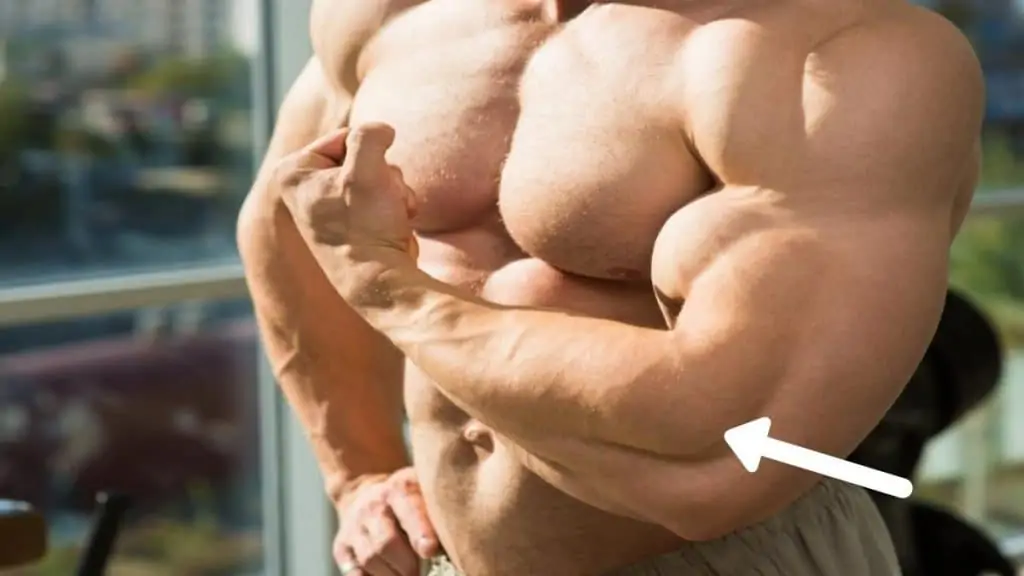
The brachioradialis is a thick muscle that helps to flex the elbow. Like the brachialis, the brachioradialis becomes more active when you place the biceps in a weak position in which they can’t supinate the forearms, such as when you use an overhand grip.
Doing spider curls with a reverse grip, then, leads to better brachioradialis development because your biceps will no longer be able to dominate the exercise now that you’re using a pronated grip.
Reverse cable bicep curls are another good exercise for building the brachioradialis because they provide constant muscle tension that’s easy to increase in small, manageable increments.
Fewer muscle imbalances
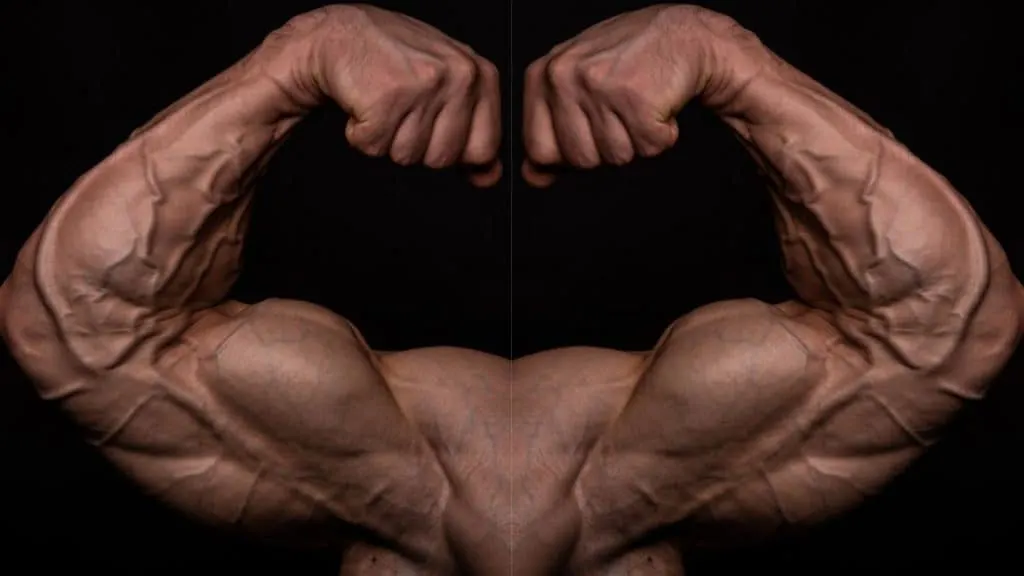
Most lifters have much better bicep development than brachialis and brachioradialis development because they don’t do enough exercises, such as preacher reverse curls, with an overhand grip.
However, by performing a spider reverse curl, you can bring up your lagging arm muscles and thus improve the aesthetics of your physique. After all, building the brachialis can actually give you the appearance of having broader biceps.
Reverse spider curl variations
If you already perform straight bar spider curls for your biceps, then it’s a good idea to pick a reverse spider curl variation to build your brachialis and brachioradialis. Below you’ll find the most popular versions of the exercise, but you can also do it with any equipment that you’re able to hold in your hands.
Barbell reverse spider curl
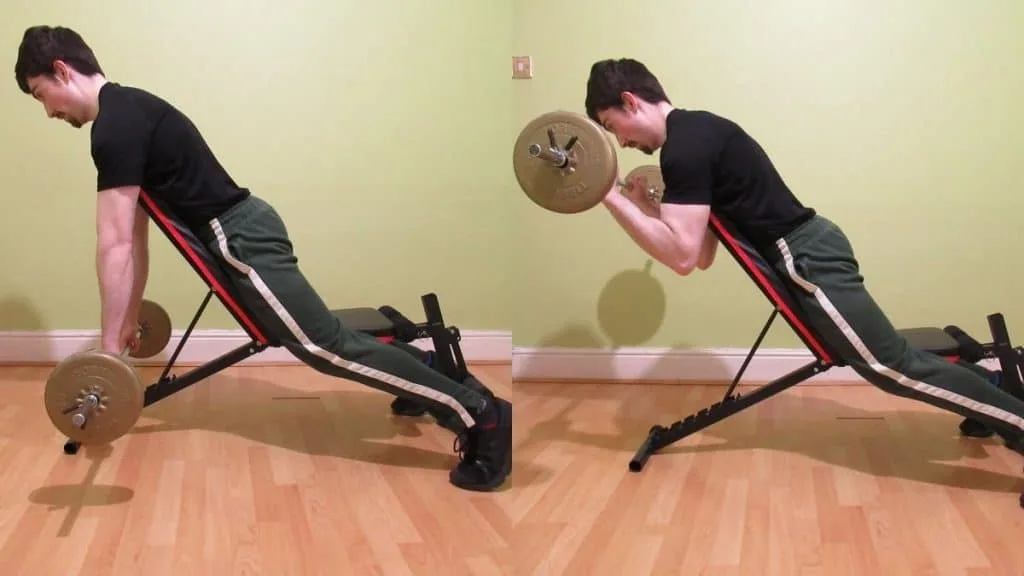
The reverse incline bench barbell spider curl enables you to overload your arms with plenty of resistance to stimulate the growth of the fast-twitch muscle fibers. You’ll also gain strength faster by using a barbell rather than a dumbbell because it’s easier to increase the resistance of barbells in manageable increments, which is important when you’re training a relatively small body part like the arms.
The only problem is that you have to get your body in the correct position before you reach down to grab the bar. This is easier said than done if you don’t have long arms, and you also have to hope that the bar doesn’t roll away while you’re setting yourself up for the exercise!
It’s recommended to use the reverse barbell spider curl as a finishing exercise so that you don’t need to lift as heavy. This way, you’ll have an easier time getting the bar into the proper position, which will help you to focus on working your biceps.
Dumbbell reverse spider curl
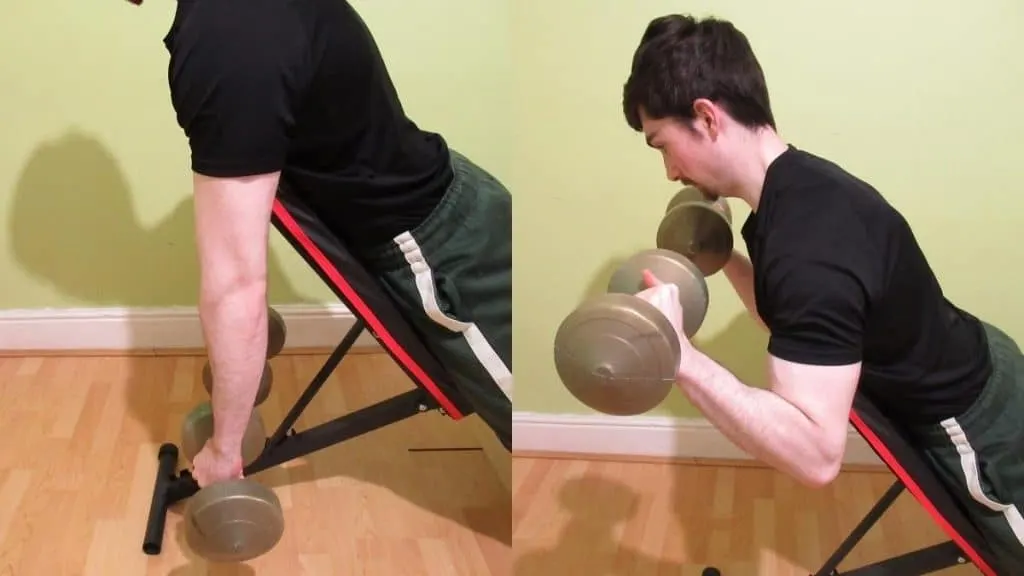
The reverse incline dumbbell spider curl, which you can also perform on a preacher bench, is an excellent exercise for ensuring that each of your biceps receives equal work. This is particularly beneficial if you have muscle imbalances that you’d like to correct or if your stronger arm usually takes over when you use a barbell.
The drawback, of course, is that you can’t gain strength as fast with dumbbells because the minimum weight increments are usually 5lbs per side. This is another reason why I recommend sticking to high reps on dumbbell reverse spider curls. They’re a great exercise for isolating your arms and finishing them off after a heavy workout, but they’re not well suited to low rep training.
Single arm reverse spider curl
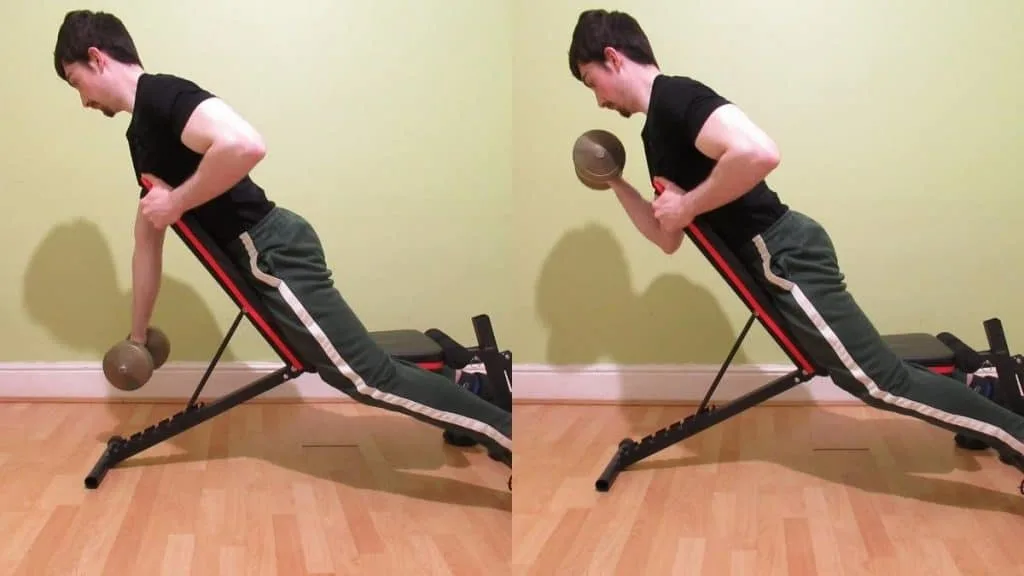
The one arm reverse spider curl is similar to the dumbbell version (and to one arm dumbbell reverse curls). In fact, the only difference is that you’re training each arm separately. The benefit of this approach is that you can focus all of your attention on each individual bicep, which will help to improve your mind-muscle connection.
The downside is that your sets will take twice as long to perform, which isn’t ideal if you’re short on time or aren’t particularly fond of lengthy gym workouts. Yet, if you have muscle imbalances, then the single-arm version may well be the best choice because it offers the most bicep isolation. [2]
You can read our guide to the one-arm dumbbell spider curls exercise for more information on the benefits of training each arm individually.
Read More: Back abs biceps workout
Conclusion: How good are reverse spider curls?

The reverse grip spider curl is a brilliant exercise for building overall arm mass because it trains the brachialis and brachioradialis muscles in addition to the biceps. So if you have overly dominant biceps compared to the rest of the muscles in your arms, then this movement is definitely worth including in your workout routine.
Your best bet is to stick to high reps for reverse spider curls (and overhand incline curls) so that the bar is easier to get into position. You don’t want to expend needless energy trying to lift a heavy weight off the floor with just your arms.
References
- Albakkar, A. (2020, April 16). Brachialis Muscle. GetBodySmart. https://www.getbodysmart.com/forearm-muscles/brachialis-muscle
- Kassel, G. (2019, July 12). What Is Unilateral Training and Why Is It Important? Shape. https://www.shape.com/fitness/tips/what-is-unilateral-training

